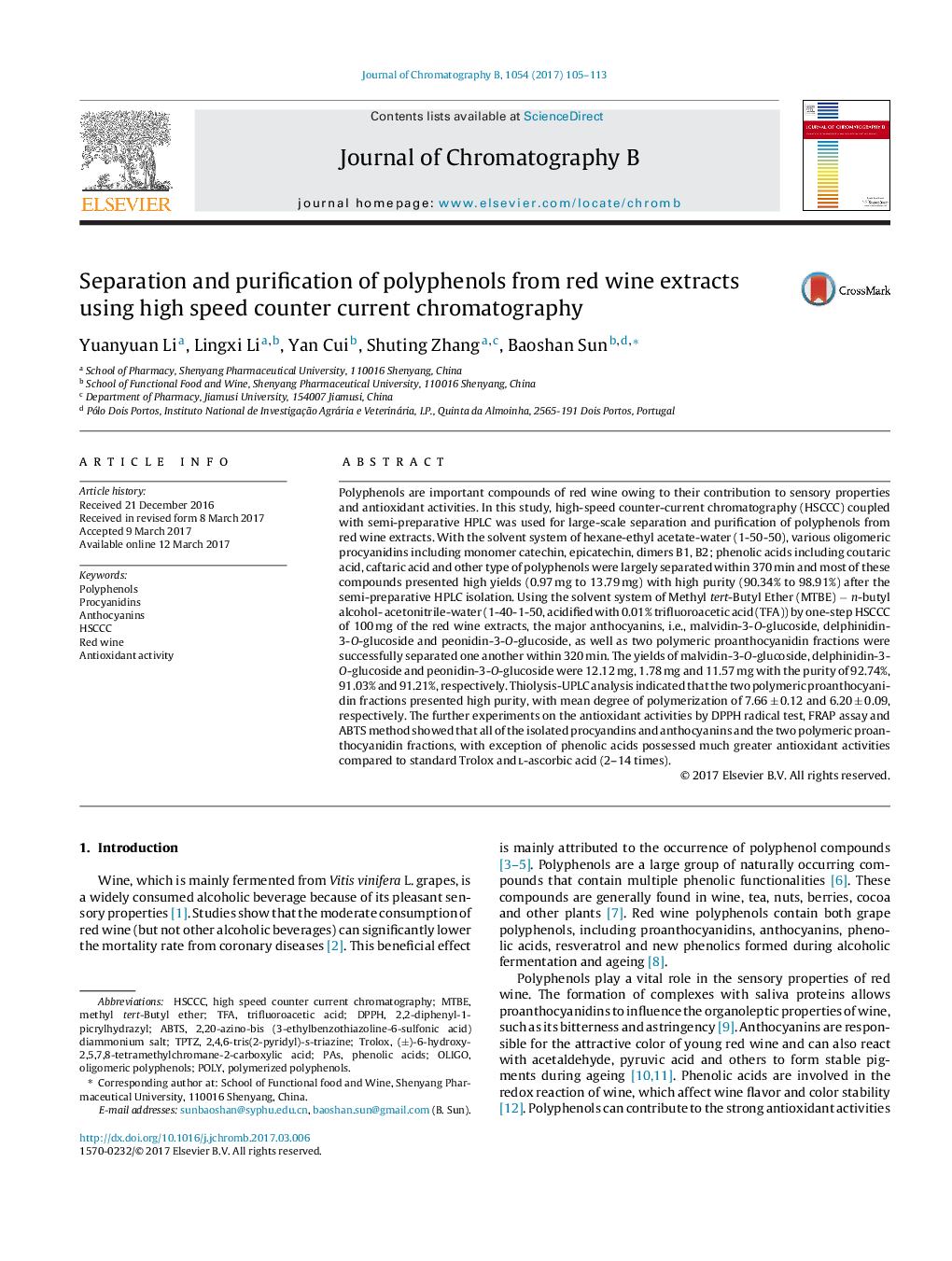| کد مقاله | کد نشریه | سال انتشار | مقاله انگلیسی | نسخه تمام متن |
|---|---|---|---|---|
| 5136313 | 1494008 | 2017 | 9 صفحه PDF | دانلود رایگان |

Polyphenols are important compounds of red wine owing to their contribution to sensory properties and antioxidant activities. In this study, high-speed counter-current chromatography (HSCCC) coupled with semi-preparative HPLC was used for large-scale separation and purification of polyphenols from red wine extracts. With the solvent system of hexane-ethyl acetate-water (1-50-50), various oligomeric procyanidins including monomer catechin, epicatechin, dimers B1, B2; phenolic acids including coutaric acid, caftaric acid and other type of polyphenols were largely separated within 370 min and most of these compounds presented high yields (0.97 mg to 13.79 mg) with high purity (90.34% to 98.91%) after the semi-preparative HPLC isolation. Using the solvent system of Methyl tert-Butyl Ether (MTBE) â n-butyl alcohol- acetonitrile-water (1-40-1-50, acidified with 0.01% trifluoroacetic acid (TFA)) by one-step HSCCC of 100 mg of the red wine extracts, the major anthocyanins, i.e., malvidin-3-O-glucoside, delphinidin-3-O-glucoside and peonidin-3-O-glucoside, as well as two polymeric proanthocyanidin fractions were successfully separated one another within 320 min. The yields of malvidin-3-O-glucoside, delphinidin-3-O-glucoside and peonidin-3-O-glucoside were 12.12 mg, 1.78 mg and 11.57 mg with the purity of 92.74%, 91.03% and 91.21%, respectively. Thiolysis-UPLC analysis indicated that the two polymeric proanthocyanidin fractions presented high purity, with mean degree of polymerization of 7.66 ± 0.12 and 6.20 ± 0.09, respectively. The further experiments on the antioxidant activities by DPPH radical test, FRAP assay and ABTS method showed that all of the isolated procyandins and anthocyanins and the two polymeric proanthocyanidin fractions, with exception of phenolic acids possessed much greater antioxidant activities compared to standard Trolox and l-ascorbic acid (2-14 times).
Journal: Journal of Chromatography B - Volume 1054, 1 June 2017, Pages 105-113